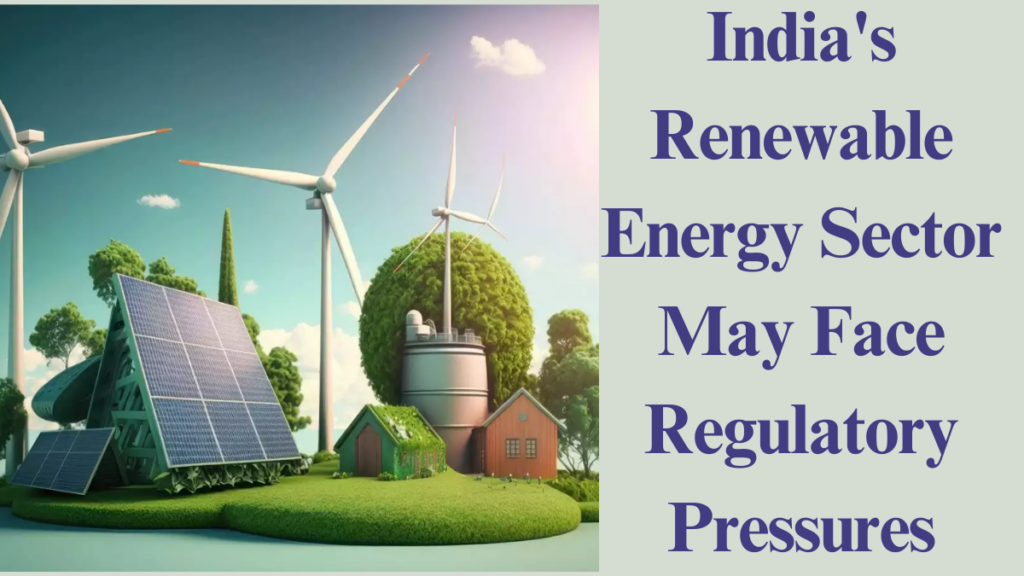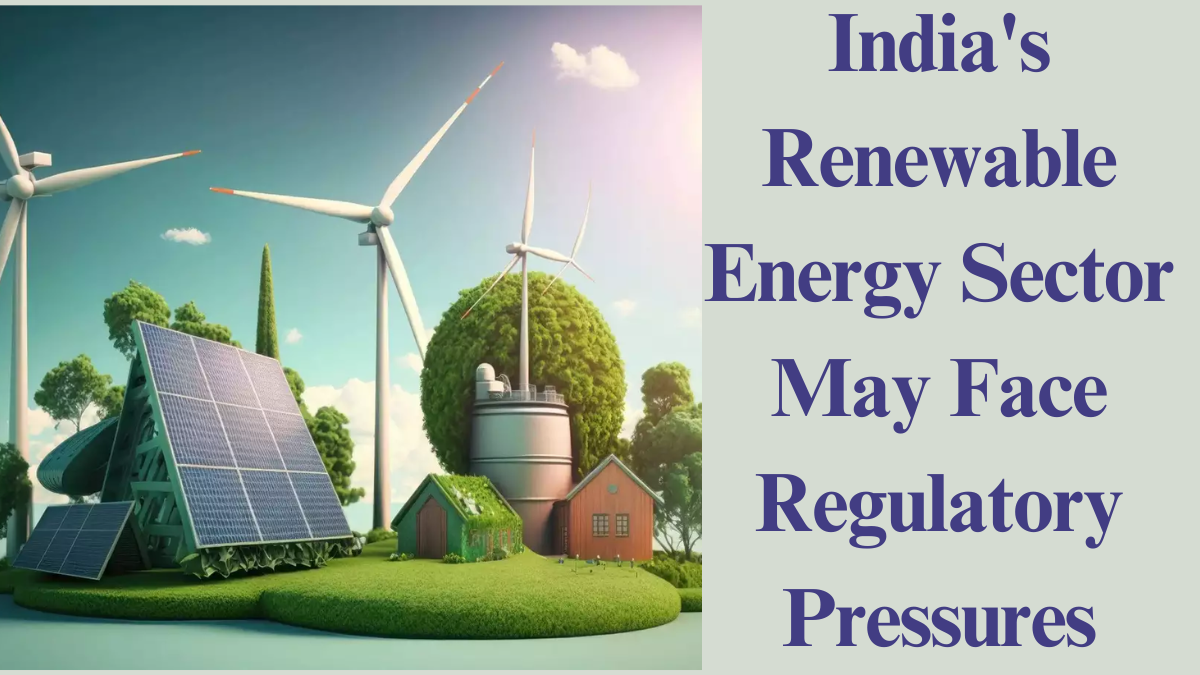The Indian renewable energy (RE) sector, one of the fastest-growing segments in the country, may soon encounter regulatory challenges, according to a report by JM Financial. Drawing parallels with the regulatory actions in China and Europe, the report suggests that India might face similar actions to address emerging issues in the sector. These challenges include grid disturbances, subsidy-driven incentives, and the potential for negative energy prices. If these trends continue, the Indian government and regulatory bodies may need to step in to implement changes, impacting both investors and companies in the sector.

Key Challenges Facing India’s Renewable Energy Sector
India has made significant strides in the renewable energy space, especially in solar and wind energy, with ambitious goals of achieving 500 GW of non-fossil fuel-based energy by 2030. However, the sector is not without its challenges. Some of the key issues highlighted in the JM Financial report include:
1. Grid Disturbances
With the rapid expansion of renewable energy capacity, grid integration has become a pressing concern. Unlike traditional energy sources like coal and gas, renewable energy sources such as solar and wind are intermittent in nature. This variability can cause instability in the grid, especially during peak demand periods or when renewable generation fluctuates.
To address these disturbances, grid infrastructure needs to be upgraded to accommodate the growing share of renewables. However, in the absence of robust grid management systems, this could lead to power supply issues and inefficiencies, which may force the government to consider regulatory measures to stabilize the system.
2. Subsidy-Driven Incentives
India’s renewable energy sector has significantly benefited from government subsidies and incentives aimed at promoting green energy adoption. While these incentives have helped the sector grow, they are often not sustainable in the long term. Subsidy-driven incentives can lead to inefficiencies in market pricing and may distort energy production in favor of certain technologies, even if they are not the most cost-effective.
The report from JM Financial highlights that, like China and Europe, India may need to reconsider its subsidy structures to avoid long-term market distortions and improve the sector’s overall efficiency.
3. Negative Energy Prices
Another challenge faced by renewable energy markets worldwide is the phenomenon of negative energy prices. This occurs when energy generation exceeds demand, causing electricity prices to drop below zero. In such situations, energy producers might have to pay utilities to take the power off their hands. This phenomenon is more commonly seen in regions with high renewable energy penetration, such as parts of Europe.
India’s renewable energy market is not yet experiencing negative prices on a large scale, but the increasing share of renewables in the energy mix could bring this challenge to the forefront in the future. The country’s regulatory bodies might need to implement mechanisms to prevent energy prices from going negative and protect the profitability of renewable energy projects.
How India Might Respond: Learning from Europe and China
The renewable energy sector in Europe and China has faced similar challenges as those currently emerging in India. In response, both regions have implemented regulatory measures to address these issues, and India may follow suit. Some possible regulatory actions could include:
1. Grid Modernization and Storage Solutions
Europe has invested heavily in smart grids and energy storage technologies to improve the integration of renewable energy into the grid. Similarly, India may need to ramp up investments in battery storage and grid modernization to accommodate the growing share of renewables and prevent disturbances.
2. Phasing Out Subsidies and Promoting Market-Driven Solutions
In countries like China, renewable energy subsidies have been gradually phased out, replaced by market-driven mechanisms such as feed-in tariffs and auction-based pricing. India may eventually follow this model to reduce dependence on subsidies and encourage market competition, which could drive down the cost of renewable energy.
3. Price Mechanisms and Market Stability
To prevent the issue of negative prices, India may look at introducing price caps or flexible pricing mechanisms for renewable energy producers. This would help ensure that energy prices remain sustainable and prevent situations where producers are penalized for generating excess electricity.
Conclusion
The Indian renewable energy sector, despite its rapid growth, is facing emerging challenges that may require regulatory intervention in the near future. Drawing lessons from China and Europe, India may need to address issues such as grid disturbances, inefficiencies from subsidy-driven incentives, and the risk of negative energy prices. As the sector continues to evolve, a more balanced and sustainable regulatory framework will be essential to support India’s ambitious renewable energy targets while ensuring the long-term stability of the energy market.
Frequently Asked Questions
1. What are the challenges facing India’s renewable energy sector?
India’s renewable energy sector faces challenges such as grid disturbances, reliance on subsidy-driven incentives, and the potential for negative energy prices due to overcapacity and intermittent generation from renewable sources.
2. How has Europe responded to these challenges?
Europe has invested in smart grids and energy storage solutions to better integrate renewable energy into the grid. The region has also gradually phased out subsidies, promoting market-driven solutions to make the sector more sustainable.
3. What is the risk of negative energy prices in India?
Negative energy prices occur when there is too much energy generation and not enough demand. While this is not yet a widespread issue in India, the growing share of renewable energy in the mix could lead to this challenge in the future.
4. What regulatory measures might India adopt to address these issues?
India may implement measures such as grid modernization, investing in energy storage solutions, phasing out subsidies, and introducing flexible pricing mechanisms to stabilize the energy market and avoid negative prices.
5. How can India ensure the sustainability of its renewable energy sector?
By learning from global best practices and implementing appropriate regulatory measures, India can ensure the long-term sustainability and stability of its renewable energy sector, supporting its ambitious renewable energy targets.
Click here to learn more.
Pari is a passionate writer known for captivating stories that blend imagination and reality. Inspired by travel, history, and everyday moments, Pari crafts narratives that resonate deeply with readers.
